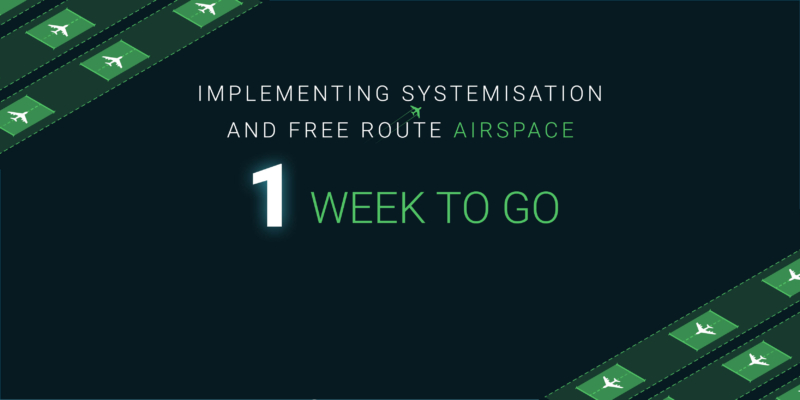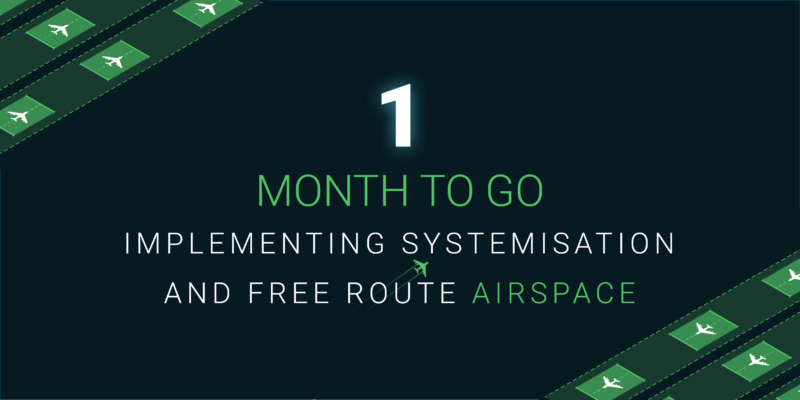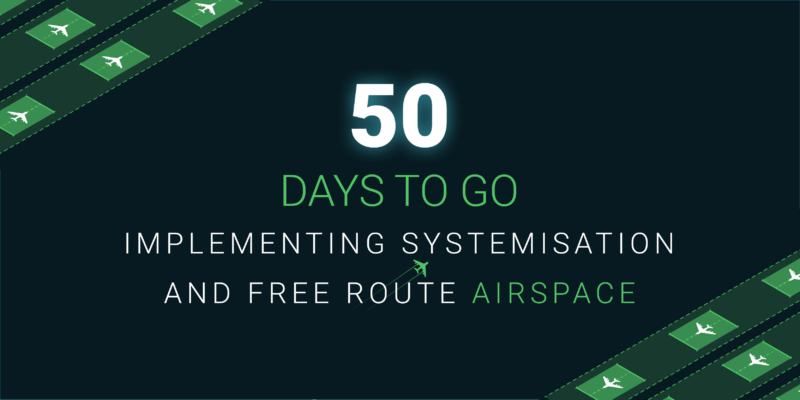West Airspace Deployment: The “O” Date
16 March 2023With the operational “O” date for West Airspace Deployment (West) only one week away (the day the airspace changes go live), you might be wondering what actually happens on the day.
Our previous West blogs have brought you along on our journey so far, providing an overview of the project and shining a light on our training programme. With the finishing line in sight, this blog looks at what goes on behind the scenes so that systemisation and free route airspace (FRA) above southwest England and Wales can be successfully implemented on Thursday 23 March.
Our colleagues are ready to go; engineers, controllers, assistant supervisors and other extensions of our brilliant team, who will take position during the night of 22 March and into the next morning to bring the airspace changes to life.
Within the space of approximately eight hours, our air traffic control (ATC) systems will be updated to deploy both a systemised network (above 7,000ft) and FRA (above 24,500ft).
We’ll have colleagues stationed at both our Swanwick and Prestwick centres, including the 20+ strong team of expert engineers and support staff to undertake the system updates. In simple terms, the systems are updated and restarted to initiate the airspace changes. As with any airspace change, this is a well-oiled, routine activity that has been subject to rigorous acceptance processes and enhancement over the years.
On the ATC side, teams will be in from the early hours on 23 March to check that everything is working as it should be; from radar maps to making sure that all supporting information is correctly updated.

West training programme in action
During the night of implementation and for the first ten days post-deployment, we have rostered a dedicated support team for controllers. This is to make sure they are given the highest levels of support and confidence to operate safely in the new airspace structure.
Known as floorwalkers, the group comprises a dedicated team who are on hand for any queries that may arise. We see this as a ‘comfort blanket’. These sector-expert floorwalkers will also have any issues brought to their attention and assist in providing safe mitigations for any bumps that may need ironing out.
The planning for “O” date has been in the works for six months. With any airspace change, but especially one of this size and complexity, we need to ensure that the network is managed as efficiently as possible throughout the changes and in the days after, not only to protect our operation but also limit the impact to our airline and airport customers.
For most airspace changes, regulations are in place for the first 20 days post-implementation to reduce the amount of traffic and give the teams some headspace to get used to the change. This has been increased to 30 days for West due to the size and timing of the deployment and will be set at a 20% reduction to the maximum number of aircraft in sectors affected by the change.
While a reduction of this size may sound like an overreaction, it is theoretical and is simply a safety net to protect the network. If everything goes as smoothly as we expect, we may be able to lift the regulations sooner. Airlines have received briefings from us since before Christmas, so their crews are familiar with the changes West will bring. Our existing communication channels will ensure our customers are kept abreast of any potential impact on their operations after the implementation.
Outside of the operation, we have ongoing engagement with a wide range of industry stakeholders including the military, general aviation community and gliding associations.
Primarily, this change will reduce the complexity within the airspace and adjoining sky and ensure all users can operate safely and efficiently. In addition to a revised airspace design, West will enable significant environmental benefits from the day it goes into service, including a predicted annual saving of over 12,000T in CO2 emissions. Our careful planning, together with the exhaustive training and engineering preparation, means we are as ready as we can possibly be for this very exciting step into the future of airspace design.
Comments
Please respect our commenting policy and guidelines when posting on this website.


